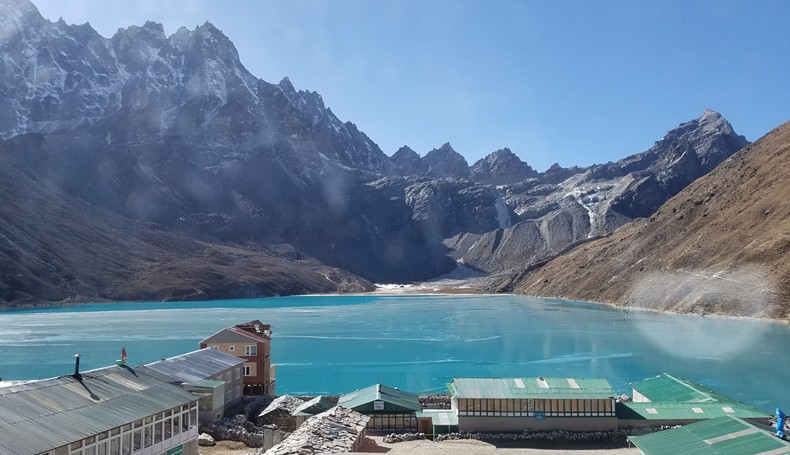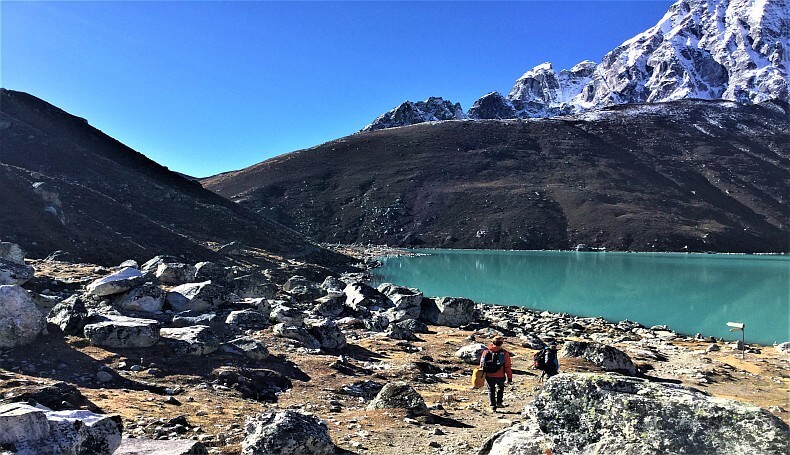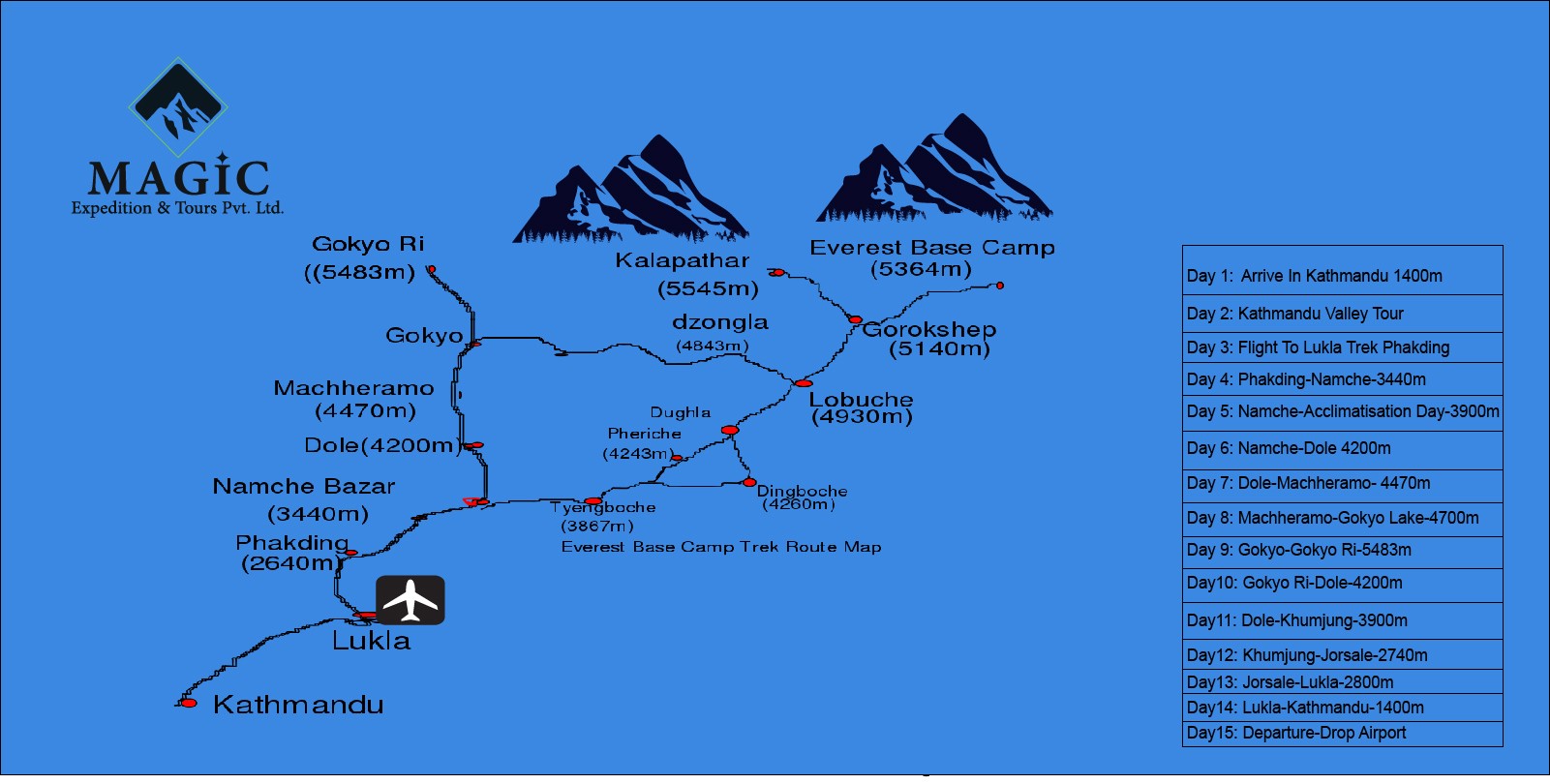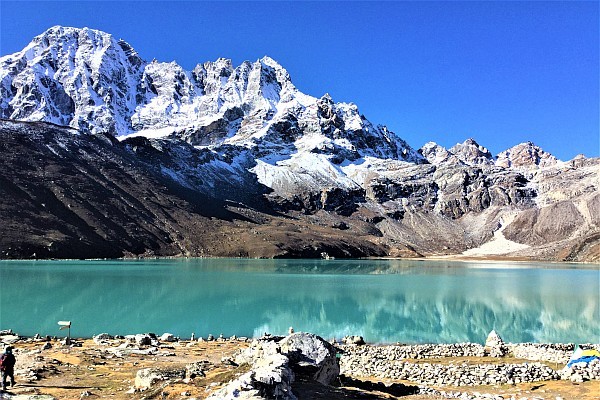Necessary trekking Equipment
To fully enjoy your trek, having the right trekking equipment is essential for both safety and comfort. The trekking equipment necessary depends on the type of trek, the time of year, weather conditions, landscape, and the maximum altitude of the trek. A properly packed trekking backpack is light and also includes multipurpose clothing items. It is important for you not to forget the essential equipment for your safety and comfort on your trek.
Please make sure that you bring sufficiently warm clothes, especially during the winter season (Dec – Feb). Not having the required trekking equipment and clothing will not only significantly decrease the pleasure of trekking, but could also worsen case scenarios that could be life-threatening. It will also be a burden to you if you pack unnecessary equipment. For your ease, the following is the equipment that you have to bring with you.
Footwear
- Trekking Boot: one Pair
- Socks: 4, Light socks : 3, Sandle: 1
Clothing
- Down or Fiber-filled water and windproof jacket and trouser: 1
- Fleece Jacket / Pullover: 1
- Warm cotton trousers: 2
- Shirt and T-shirts: 4
- Lightweight cotton long trousers :3
- Long underwear: 2, Short underwear: 4
- Sun hat / Scarft/ Woolen hat :1
- Lightweight gloves: 1, Raincoat:1
- Heavyweight glove or mitten with a waterproof: 1
Medicinal
- Basic first-aid box
- Diamox tablets to reduce altitude sickness
- Insect/anti-itch Ointment
- Non-prescription medicine such as pain reliever, fever reducer, antibiotics, and ointments
- Prescription medicine traveler's diarrhea, Avmoine
- Female Sanitary pads
- Hand Sanitizer and wet wipes
- Medicine for Cough and Heartburn (It mainly happens when you go to higher altitudes)
- Band-aid
- Ibuprofen and also paracetamol in case of fever
Other Equipment
- Day Pack at Least 25 kg
- Water Bottle 1
- Sun Cream 1
- Sun Glass 1
- Towel
- Flashlight with spare bulbs, batteries, lip salve, gaiters.
- Laundry soap
- Swiss Knife
- Sewing Kit, Camera, Film, Cards, and Personal Medical Kit.
Optional
- Notebook and Pen
- Toilet articles
- Toilet Roll
For additional information, you can check our article Trekking Gears Checklist.
An environment in the Everest region
The mountain of the Khumbu is so Large that they create their own local climate. As you climb through the hills, mixed deciduous forest and scattered rice terraces give way to pine forest, then rhododendrons, then scrub junipers, before finally, the only vegetation is low alpine shrubs and grasses. As you walk, scan the skies and the undergrowth for golden eagle and the spectacular Himalayan Monal ( Damphe or impeyan pheasant ) with its regal, shimmering green-blue, and purple plumage.
Early in the morning around in the forested area of Namche Bazaar, Thame, Phortse, and Tengboche Himalayan Tahr and Musk Deer are often spotted beside the trail. You may also hear the strange, hoarse call of the muntjak or barking deer. The predators of the Himalayas are rarely seen but they are out there – the Khumbu is home to both leopards and snow leopards.
When to trek:
It is theoretically possible to trek in the Khumbu year-round, but flights are frequently canceled in winter and during the monsoon because of the poor visibility at the Lukla airport. The best weather is in autumn when the skies are clear and temperatures at higher altitudes are more bearable. However, the competition for the seat on planes and bed space in lodges can be intense.
Spring is a calmer time to visit though clouds and rain become more frequent in the build-up to the monsoon. The most serious obstacle to trekking in winter is the cold. Days can be perfectly comfortable, but the mercury plummets as soon as the sun sinks behind the mountain. At some time during the season from October to March, there is certain to be a storm or two that will blanket the countryside with snow.
Permits and Regulation:
You must take two kinds of permits for regular trekking in the Everest region. One permit is for the Loyalty of Sagarmatha National Park. We must take it from the Tourism Board of Nepal for the sector of regular trekking in the Everest Region. Another permit is TIMS ( Travel Information Management System). That is to record all the trekker profiles by the tourism board of Nepal.
Gateways:
There are two ways for trekking in the Everest Region. One way is directly fly from Kathmandu to The Luckla and start your trek from Lukla. So When you fly from Lukla you can complete the Everest Base camp within 14 Days. And another way is to Take a bus from Kathmandu to Bandar and start trekking from the Jiri / Bandar. If you follow this route you can complete Everest Base Camp in 18 to 19 Days.
Supplies and Equipment :
If you have forgotten anything like cell batteries, sun-creams, film, memory cards, sleeping bags, down jacket, Trekking shoes, sunglasses, to bring you can buy or rent in Kathmandu and in Namche Bazaar. It will be costly depending on the quality you will buy or rent.
Teahouse trekking:
Teahouse trekking takes you to the mountain where you stay every overnight at the guest house. Food and accommodations are provided according to your choice at the guest house.
Festivals In Solu Khumbu:
Along with the connection of Tibetan Buddhism and the Lunar Calendar of the Tibetan, there are four major festivals in Solu Khumbu.
Tibetan New Year or Gyalpo Losar: This festival is usually held in late February or early March which is celebrated with the masked dance performances at the end of the 12th month of the Tibetan Calendar.
Buddha Jayanti:
The festival falls normally in May on the full moon of the fourth Tibetan month. This Buddha Jayanti is also known as Saga Dawa and it celebrates the birthday of Siddhartha Gautama Buddha with parades stupas and Gompas and the lighting of butter lamps at sacred sites.
Mani Rimdu:
This is a famous Sherpa festival which is celebrated normally in October and November at the monasteries of Tengboche, at Thame in May, and at Chiwang or near Phaplu in November or December. During the festival, monks don elaborate masks and costumes and perform ritualistic cham dances that symbolize the triumph of Buddhism over Bon. The ancient animistic religion of Tibet. At this festival sherpas from all over the Khumbu flock to attend the spectacle and the final evening turns into the Sherpa equivalent of an all-night rave.
Dumje:
This festival is largely celebrated at Namche Bazaar, Pangboche, Khumjung, and Thame for the birth of Guru Rinpoche who introduced Buddhism to Tibet.
Altitude sickness:
The more you ascend to the higher altitudes, the more oxygen will be less. Normally, no traveler will be suffered from altitude sickness below 4ooo m. high. But this is not the case always. Those who lack good stamina, physical fitness, those who drink a lot and smoke will likely suffer altitude sickness. Mild and common symptoms include headaches (also a symptom of dehydration), low appetite, and restless sleep. More moderate symptoms include vomiting, fatigue, and diarrhea.
Many compare altitude sickness to the sensations of having a hangover. Severe symptoms include blue lips and fingernails, severe difficulty breathing, poor coordination, fatigue, and drowsiness. To avoid altitude sickness, we recommend you to descend down to the lower altitude, hydrate sufficiently and maintain nutrition. In case you have these above mentioned symptoms, inform our guide since he will be far more experienced than you.
Carrying my stuff when trekking:
We will employ our porters to carry up to 12kgs of weight for each trekker. This is included in the price of each trek. We provide 1 porter for 2 trekkers in accordance with the guidelines set out by the International Porter Protection Group. If you are planning to carry more weight, please let us know. In general, 12kg is more than sufficient. If you have unnecessary stuff that is not required during the trekking days in the mountain, you can leave it at the hotel till you come back. They will store it safely.
Normally each porter will carry 2 people's rucksacks and he will simply tie them together using rope (this does not harm any of the rucksacks). If you are trekking with a friend or loved one, and there is space in one rucksack for both your possessions, then please feel free to share the same rucksack but please ensure that it weighs less than 24kg. It is helpful if you do not put things that you may need during the day in your large rucksack as you will not be walking with your porter at all times.
Can I drink the tap water:
- We don’t recommend you to drink tap water in the mountains since it is not safe.
- And also we advise the tourist not to drink from plastic bottles especially in the mountain to prevent getting contamination of the environment. So use Non-Plastic Bottle in option
- Advice to drink boiled water fromTea House.
- Advice to drink ginger and lemon tea to minimize the need for water consumption.
- Purifying tap/river water using a chloride pump, iodine, or chloride tablets. The taste of the tablets is not appetizing, so it is recommendable to use a dissolvable vitamin tablet to add flavor.
How old does a trekker have to be to go trekking:
- All trekkers under 18 must be accompanied by a friend/family member who is over 18 years of age.
- Moderate to strenuous treks: minimum age is 14
- Easy treks: minimum age is 12-11
How will I get rescued if I am critically ill during the trek?
Gokyo Lake Trek is a trek where the elevation starts from 1350m to 5360m. Altitude sickness mainly occurs after you head above 2500m. You will not get altitude sickness symptoms below 2500m. Some of the altitude sickness symptoms are Nausea, Headache, loss of appetite, difficulty breathing, and dizziness. Acclimatization is the main thing that helps to prevent altitude sickness. But you can still prevent altitude sickness by drinking more water, avoiding strenuous exercise for 24 hours, and by having a rest day every 600m-900m you go up.
However, one out of 10 people may catch altitude sickness even with all the preventions. We can take DIAMOX if we suffer from altitude sickness. But if the condition does not get well even after taking the Diamox, the guide will immediately inform the travel company. If you will be ill at any point of the trek you will be slowly taken to the lower elevation. If you are ill then you will be taken to the lower altitude and seek basic medical where our guide will help you, and then if it’s necessary or emergency you will be immediately sent to Kathmandu by emergency helicopter service. This is how you will get rescued if you will be critically ill during the trek.
The importance of insurance in Gokyo Lake Trek
Travel insurance plays an essential role. The right travel insurance will protect you from the unique risks while traveling to Nepal or Climbing to Gokyo Lake Trek. Find the best policies that cover all the necessary events associated with Gokyo Lake Trek or other trekking areas. There will not be a relaxed trip without travel insurance. It is very necessary to be careful while choosing policies because some insurance companies do not include adventure trekking.
Mostly many of the travel insurance covers only up to the elevation of 3000m but the Gokyo Lake trek will go beyond 3000m standing at the highest point which will be above 5360m. We suggest you choose Your travel insurance that covers up to 6000m which you will be covered for the entire trek and shouldn't be worried about evacuations or medical assistance costs. Before buying your insurance, your insurer should be aware of the Itinerary of Magic Expedition and Tours.
If you are planning for trekking in the Himalayas, Your insurance should cover emergency air service Helicopter and should include all the medical expenses. The emergency helicopter service would be very costly so If you have your insurance done you wouldn’t be worried. Your travel insurance should cover the cancelation policy because if you have to cancel a paid trek due to weather conditions, They can cover this expense. You should double-check that it is included on the top of the standard hospitalization cover. Some of the Travel insurances that are recommended are:-



 What is Everest Gokyo Lake Trek Overview?
What is Everest Gokyo Lake Trek Overview?
